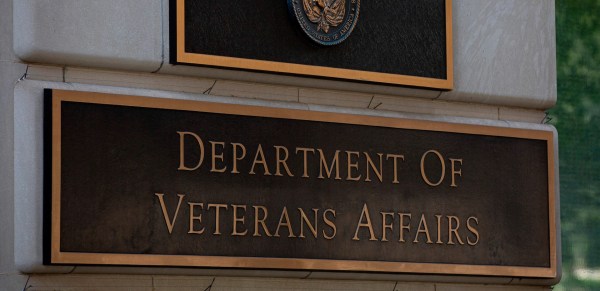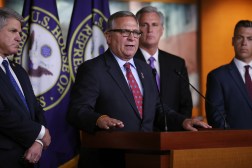The Department of Veterans Affairs this year plans to award a new contract for a replacement to its outdated scheduling system — the IT infrastructure at the heart of the nationwide waiting list scandal. But before it does that, the House Veterans Affairs Committee plans to investigate why the department has allowed the system to remain so antiquated for so long.
A source on Capitol Hill confirmed to FedScoop that the committee is planning to hold separate hearings on the role VA’s problematic IT systems have played in the ongoing patient care delay scandal. The source spoke to FedScoop on background because of the sensitivity of the committee’s investigation.
Philip Matkovsky, assistant deputy undersecretary for health for Administrative Operations at VA, said a contract to replace the Veterans Integrated System Technology Architecture, known as VistA, is scheduled to be awarded by the end of the fiscal year.
“Our intention is not to pick someone who can write for us a book about how they’re going to develop a scheduling system, but rather to acquire a scheduling system and then deploy that scheduling system,” Matkovsky said during a June 9 committee hearing on misconduct and IT system problems throughout the VA medical system being blamed for life-threatening delays in veteran health care.
Although VistA was considered state-of-the-art for an electronic health record system when it was originally developed in the early 1990s, it has since fallen significantly behind private sector standards, Matkovsky said.
“I can tell you that for engineering, it is not state-of-the-art. For our work order management, for our bio-med technicians, it is not state-of-the-art. For our facilities management staff, it is not state-of-the-art. For our housekeeping and environmental management staff, it is not,” Matkovsky said in response to direct questions about VistA’s capabilities from Rep. Jeff Denham, R-Calif.
“For scheduling, we want to be able to provide timely, accurate information about when veterans want to be seen and what capacity we have in our system to see them,” he said. “I would rather buy what the industry has and knows can work.”
But for Rep. Bill Johnson, R-Ohio, spending millions of dollars on a new system makes no sense when VA has yet to explain to Congress what its IT architecture strategy is.
“It’s now going on four years, and we still do not have the IT architecture [for the VA],” Johnson said. “The VA’s got hundreds and hundreds of IT systems. How in God’s name can you expect new IT integration to be complete and accurate if the VA still has no idea of what the architecture of its IT environment is? I would not approve a single new dollar of new IT spending until someone in that IT department could show me the current architecture and how these systems fit together,” Johnson said.
“I have to wonder why? Why are we still using 1985 technology,” said Rep. Ann Kirkpatrick, D-Ariz.
Committee chairman Rep. Jeff Miller, R-Fla., offered a detailed list of VA IT spending that has seemingly not produced any tangible improvements in veterans healthcare management and delivery during the last 10 years.
“VA has requested and Congress has funded IT enhancements to include a new scheduling system, which has been dubbed a failure by GAO,” Miller said. In addition, “the scheduling replacement project was $127 million dollars over nine years and it was hindered by management weaknesses,” he said.
Also, there was a new $249 million financial and logistics system, known as CoreFLS, that was riddled with problems that led to more than $220 million in cost overruns. A follow-on program cost $607 million, according to Miller.
“And then there’s the VistA [Foundations Modernization program] — $2.4 billion in investments that this Congress has made and yet we sit here asking what is the answer to the question why are we still using outdated systems when we have given hundreds of millions of dollars to the VA,” Miller said.
Matkovsky did not have an answer as to why VA has taken so long to produce its IT architecture plans for the committee to review.
FedScoop contacted VA May 28 requesting comment on a confidential “Decision Briefing” obtained exclusively by FedScoop that outlined significant security vulnerabilities and integration problems with VistA. Officials from VA’s Office of Information and Technology have not responded to that request.






